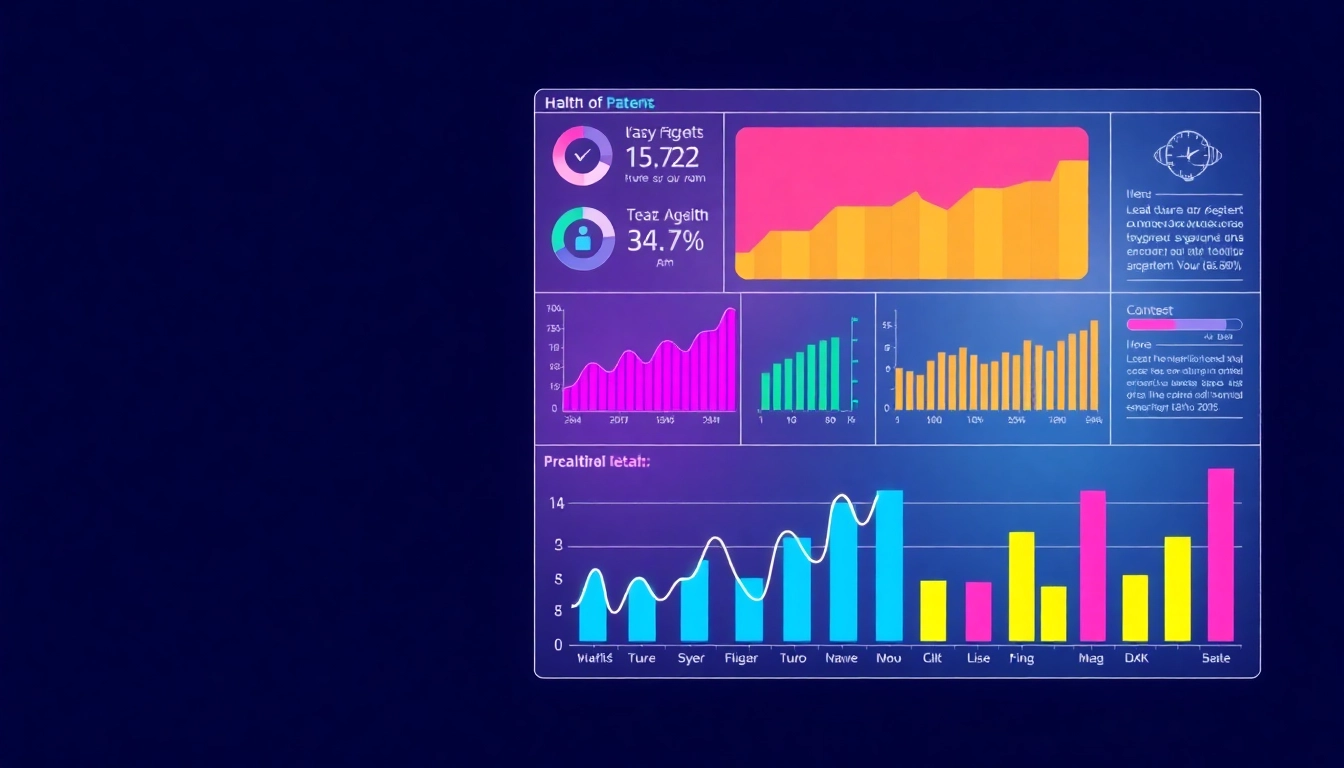Understanding Informatics in Healthcare
In the rapidly evolving landscape of healthcare, the intersection of technology and information systems has given rise to a field known as informatics, which significantly enhances the quality of patient care. Informatics encompasses a wide range of disciplines with the ultimate goal of improving health outcomes through better data management. For instance, initiatives such as www.informaticsview.com play a pivotal role in disseminating valuable insights and resources to healthcare professionals and researchers alike.
Defining Informatics: A Primer
Informatics is broadly defined as the study and application of data, information, and knowledge management in healthcare. This discipline integrates various fields such as computer science, information science, and healthcare to promote effective communication and information usage within health systems. The American Medical Informatics Association (AMIA) describes informatics as the science of using data and knowledge effectively to improve human health and healthcare services. Through informatics, healthcare providers learn how to harness the vast amounts of data generated daily to make informed decisions that directly affect patient care and health policies.
The Role of Informatics in Modern Medicine
In today’s medical environment, informatics plays an integral role in facilitating various functions, including but not limited to clinical decision support, patient data management, and health information exchange. By utilizing informatics tools, healthcare professionals can analyze patient data more effectively, streamline processes, and minimize errors in treatment. Moreover, informatics equips providers with valuable insights that inform ongoing care models and medical research, leading to better prevention strategies and treatment protocols.
Key Terminology and Concepts in Healthcare Informatics
To navigate the complexities of healthcare informatics, it is crucial to understand several key terms and concepts:
- Electronic Health Record (EHR): A digital version of a patient’s paper chart, which contains a comprehensive record of the patient’s health history, treatments, and outcomes.
- Health Information Exchange (HIE): A system that allows healthcare providers to access and share patient information securely for improved care coordination.
- Clinical Decision Support System (CDSS): An informatics system that provides clinicians with clinical knowledge and patient data to help inform their decision-making process.
- Telemedicine: The use of telecommunications technology to diagnose and treat patients remotely, significantly increasing access to care.
Critical Applications of Informatics
Implementing Electronic Health Records (EHRs)
One of the most transformative advancements in healthcare informatics is the widespread implementation of Electronic Health Records (EHRs). EHRs digitize the patient record, making it easier for healthcare providers to access, update, and share patient information. The shift from paper records to EHRs has led to:
- Improved accuracy: Digital records reduce the risk of miscommunication and error through legibility and standardized data entry.
- Enhanced data sharing: EHRs facilitate the rapid exchange of patient information between different healthcare providers, improving coordination of care.
- Streamlined processes: Automatic updates and reminders can strengthen adherence to treatment protocols and medication schedules.
However, implementing EHR systems comes with its challenges, including the need for proper training for healthcare personnel and overcoming resistance to change from traditional paper-based practices.
Telemedicine: Bridging Distance with Technology
Telemedicine has emerged as a vital application of informatics, particularly in the wake of the COVID-19 pandemic. This technology allows healthcare providers to conduct consultations remotely through video calls or messaging. The benefits of telemedicine include:
- Increased accessibility for patients who may have difficulty traveling to healthcare facilities.
- Time efficiency, as consultations can be conducted from anywhere, allowing for greater flexibility in scheduling.
- Continuous care and follow-up for patients with chronic conditions or ongoing treatment needs.
Despite its advantages, telemedicine faces obstacles, such as the need for reliable internet access and considerations pertaining to reimbursement and regulatory requirements.
Data Sharing and Health Information Exchanges (HIE)
Health Information Exchanges (HIE) are networks that allow health organizations to securely share information about patients. This data sharing is critical in ensuring that patient care is seamless and well-coordinated. HIE enhances patient safety by providing clinicians with a complete picture of a patient’s health history, enabling more informed decision-making. Some key advantages of HIE include:
- Reduction in duplicate tests and procedures, which can save time and reduce healthcare costs.
- Minimized medication errors by enabling clinicians to access a patient’s complete medication history.
- Facilitated continuity of care, particularly when patients transition between different providers or facilities.
The successful implementation of HIE requires collaboration across various healthcare systems, which can often be complex due to differing regulations and technology standards.
Challenges Faced in Healthcare Informatics
Data Privacy and Security Concerns
As healthcare increasingly relies on digital systems and data-sharing techniques, ensuring the privacy and security of sensitive patient information remains paramount. Cybersecurity threats pose significant risks; breaches can lead to loss of trust, regulatory penalties, and harm to patients. Key measures to mitigate these risks include:
- Implementing strong encryption protocols to protect data in transit and at rest.
- Regularly auditing security practices and conducting risk assessments to identify vulnerabilities.
- Educating staff on the importance of data security and best practices for protecting patient information.
Integration of Diverse Healthcare Systems
The integration of various healthcare systems can be a daunting task, especially in facilities managing multiple platforms that may not be compatible with one another. Successful integration is crucial for the comprehensive functionality of informatics systems, and it often involves:
- Investing in interoperable systems that allow seamless communication and data exchange.
- Engaging stakeholders from IT, administrative, and clinical viewpoints to ensure that systems meet the diverse needs of users.
- Designing standardized workflows that facilitate ease of use and better data input across systems.
Training and Educating Healthcare Professionals
For informatics to be effective, healthcare professionals must be adept at using new technologies and systems. This requires ongoing education and training. Strategies for successful training programs include:
- Conducting regular workshops and hands-on training sessions that allow staff to practice using new systems.
- Creating user-friendly documentation and resources that staff can consult as needed.
- Encouraging cross-training among staff to promote a team-based approach to using informatics tools.
Best Practices to Enhance Informatics Implementation
Strategies for Successful EHR Adoption
Adopting Electronic Health Records (EHRs) successfully involves more than just the technical setup. It requires a thoughtful approach to change management, which includes:
- Involving end-users in the selection process to ensure that the chosen EHR system meets their needs.
- Setting clear expectations and timelines for the implementation process to guide staff through transitions.
- Providing robust support systems during the rollout, including technical support and opportunities for feedback.
Promoting User Engagement and Feedback
User engagement is crucial for the successful implementation of healthcare informatics systems. Continuous feedback from users provides insights into how systems are functioning and what improvements can be made. Best practices include:
- Conducting surveys to gather actionable feedback from staff and clinicians about system usage.
- Establishing a feedback forum where users can share their experiences and suggestions for improvement.
- Incorporating feedback into regular system updates and training programs to tailor them to user needs.
Continuous Improvement through Data Analytics
Data analytics is a powerful tool that allows healthcare organizations to monitor performance, identify trends, and measure outcomes effectively. To harness this capability, organizations should:
- Invest in training staff on data utilization to ensure that insights are actionable and empower better decision-making.
- Establish benchmarks to evaluate the success of informatics initiatives and identify areas for improvement.
- Utilize predictive analytics to anticipate healthcare needs and optimize resource allocation.
Future Trends in Healthcare Informatics
The Role of Artificial Intelligence in Data Analysis
Artificial intelligence (AI) is poised to revolutionize healthcare informatics by enhancing data analysis capabilities. AI technologies can analyze vast datasets more quickly and accurately than traditional methods, leading to improved clinical outcomes and operational efficiencies. Some potential applications include:
- Predictive modeling to identify at-risk populations and implement preventive measures.
- Natural language processing to extract valuable insights from unstructured data, such as medical notes and reports.
- Machine learning algorithms that adapt and improve over time, increasing diagnostic accuracy and treatment effectiveness.
Personalized Medicine: Tailoring Care through Informatics
As informatics evolves, so does the potential for personalized medicine—a healthcare approach that tailors treatment to individual characteristics, needs, and preferences. Informatics facilitates this trend by enabling:
- Use of genetic data to inform treatment decisions and help predict responses to medications.
- Integration of patient-reported outcomes and preferences into care planning.
- Application of analytics to develop targeted interventions that are more effective than one-size-fits-all approaches.
Potential Innovations on the Horizon
Looking ahead, healthcare informatics will continue to innovate and adapt to meet the ever-changing healthcare landscape. Emerging technologies and methodologies could include:
- Advanced interoperability standards that truly break down silos between different health information systems.
- Blockchain technology offering secure and transparent data sharing among all parties involved in patient care.
- Enhanced training and onboarding tools utilizing virtual reality and simulation, making learning interactive and engaging.



